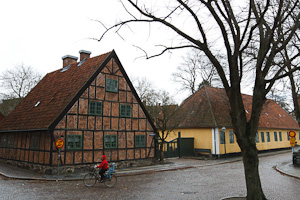Locus Peccatorum

This building was originally designed as a normal dwelling-house but very soon became the living quarters for students. Student quarters in Lund once played an equally important role in student life as the nation houses today and were given humorous names.
When the cultural museum Kulturen acquired the building in 1898, there was a cigar shop on the ground floor with an entrance facing the street. In 1906, the façade plastering was removed from the building, the windows were exchanged for the smaller paned ones it has today and the outer half-timbered sections were exposed. The weather vane on the southern gable end was added by the museum. Shaped like a dragon’s head in copper plate, it is dated 1768.
Initially, Locus Peccatorum was used as an arts and crafts warehouse and exhibition centre. For a while, it served as living quarters for students from the Arts and Crafts Institute.
The name Locus Peccatorum or Syndernas Hus (Sinner’s House) is the result of student humour. In 1829, a tragic murder took place in the building, when a student murdered a fellow student. The culprit was beheaded in 1830 at Lund’s place of execution. At the time of this dramatic event, the building belonged to professor and university lecturer Lindfors, who was residing elsewhere at the time.
For a long time, the building has served as office premises for the cultural museum and is not open to the public. However, in the attic, two student rooms still remain that have not been renovated.
